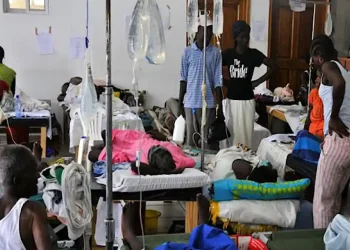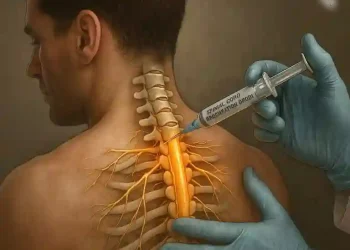The female body is not merely a specimen; it is a dynamic, intelligent ecosystem, a cathedral built for both power and grace. From puberty, it operates on a beautiful, intricate rhythm orchestrated by a symphony of hormones. The ovaries, the central conductors, release estrogen and progesterone in a monthly cadence, directing the ballet of ovulation and menstruation. This cycle is more than reproduction; it influences everything from brain chemistry and mood to bone density and skin elasticity. The entire system, the hypothalamus and pituitary gland in the brain, the ovaries, the uterus, works in a delicate, feedback-driven harmony.
For decades, this rhythm has been the body’s metronome. But then, the music begins to change. This transition, known collectively as menopause, is not a single event but a multi-stage process, a planned evolution that unfolds over years.
The Timeline of Change: A Process, Not a Switch
The journey typically begins in a woman’s mid-to-late 40s, though it can start for some in their mid-30s. This opening act is Perimenopause, a transition phase that can last 4 to 8 years. Here, the ovaries begin to waver in their rhythmic duty, causing hormone levels to fluctuate wildly before their steady decline. This is when most classic symptoms—irregular periods, hot flashes, sleep disturbances, and brain fog—first emerge.
The defining moment, simply called Menopause, is a single point in time: the day a woman has gone 12 consecutive months without a menstrual period. The average age for this milestone is 51, marking the official end of her reproductive years.
What follows is Postmenopause, the rest of a woman’s life. Ovarian hormone production is now permanently low. While acute symptoms may ease, the body settles into a new hormonal landscape, bringing a focus on long-term health.
This timeline, however, is not one-size-fits-all. Genetics is the strongest predictor—your mother’s experience is a key clue. Lifestyle matters profoundly; smoking, for instance, can accelerate the process by 1-2 years. Some women experience Early Menopause between 40-45, and about 1% face Premature Ovarian Insufficiency before 40. Furthermore, surgical removal of the ovaries or certain medical treatments can induce menopause at any age, abruptly halting the symphony.
This is not a failure or a breakdown. It is a natural, albeit sometimes turbulent, renovation of the cathedral. Let’s delve into how this transformation unfolds across the body’s sacred halls.
The Central Command: The Brain and Neuroendocrine System
The journey’s first tremors are felt in the brain. The ovaries, after years of faithful service, begin to resist signals from the pituitary gland. The resulting hormonal upheaval in the brain’s command centre has immediate and profound effects:
- The Thermoregulatory Glitch: The hypothalamus, which regulates body temperature, becomes hypersensitive. This triggers sudden, intense waves of heat known as hot flashes, often followed by drenching night sweats that shatter sleep.
- The Mood and Mind Connection: Estrogen is a key player in the brain’s chemistry, influencing serotonin and norepinephrine. Its decline can lead to “Brain Fog” (difficulty with memory and concentration), emotional lability (increased irritability and anxiety), and persistent sleep disruption beyond night sweats, leading to chronic fatigue.
The Sacred Space: The Reproductive Organs
As the hormonal fuel diminishes, the reproductive organs, once the center of the cycle, undergo a profound transformation.
- Ovaries: They shrink and cease ovulation. The production of estrogen and progesterone plummets.
- Uterus & Endometrium: Without the cyclical build-up and shedding of the uterine lining, menstruation ceases.
- Vagina & Vulva: This is where Genitourinary Syndrome of Menopause (GSM) is most acutely felt. Tissues become thinner, drier, and less elastic (vaginal atrophy), leading to painful intercourse, itching, and increased susceptibility to infections.
- Bladder & Urethra: The thinning urethral lining can lead to more urinary tract infections, urgency, and stress incontinence.
The Structural Framework: Bones, Joints, and Muscles
Estrogen is a crucial guardian of bone health, a shield slowing natural bone breakdown. As this shield vanishes, bone loss accelerates dramatically.
- Skeletal System: The first postmenopausal years are a period of rapid bone loss, drastically increasing the risk of osteoporosis and fractures.
- Joints and Muscles: Many women report new aches and stiffness. A parallel decrease in collagen contributes to this and a loss of skin elasticity.
The Cardiovascular Engine: The Heart and Blood Vessels
Before menopause, estrogen offers women a natural cardiovascular advantage by keeping vessels flexible and cholesterol balanced. As estrogen declines, this protection wanes.
- The risk of heart disease becomes equal to that of men.
- Blood pressure may rise, and cholesterol levels often shift unfavorably.
The External Canvas: Skin, Hair, and Hair Distribution
The decline in estrogen and a relative increase in androgens reshape a woman’s exterior.
- Skin: Collagen loss leads to thinner, drier skin and more wrinkles.
- Hair: Scalp hair may thin, while some women may notice new, coarser hair on the chin or upper lip.
A New Equilibrium: The Body’s Wisdom and Navigating the Transition
While the list of changes can seem daunting, it is critical to reframe this transition. Menopause is not an end; it is a pivot. The body is conserving energy, moving from its reproductive phase into a new stage of life. The same wisdom that guided puberty is now guiding this evolution.
Understanding the “when” and “what” is the first step toward empowerment. This knowledge allows women to reframe confusing symptoms, seek proactive care in their 40s, and advocate for themselves in healthcare settings.
Management is highly individual and can include:
- Lifestyle as Medicine: A nutrient-rich diet high in calcium and Vitamin D, weight-bearing exercise for bones, strength training for muscle, and cardiovascular activity for heart health are foundational.
- Hormone and Non-Hormone Therapies: For many, Menopausal Hormone Therapy (MHT) can safely alleviate severe symptoms. For others, non-hormonal medications and vaginal moisturizers provide significant relief.
- Mental and Emotional Support: Therapy, mindfulness, and community are powerful tools for navigating the psychological shifts.
- Open Dialogue: Breaking the silence with healthcare providers, partners, and friends is essential for compassionate and effective care.
The menopausal body is not broken. It is a body that has carried life, weathered storms, and accumulated profound wisdom. It is a cathedral being renovated, its architecture shifting to stand strong for the chapters yet to come. By listening to its changes and responding with knowledge and care, a woman can move through this transition not with loss, but with a powerful, hard-won sense of self.


















